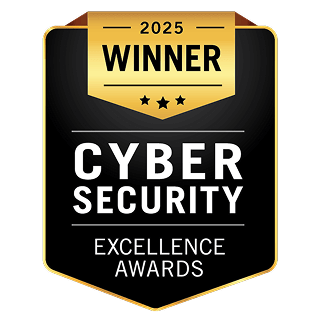Beyond the Perimeter: The Rising Convergence of Physical and Digital Threats to Executives and HNWIs

In today’s hyperconnected world, the once-clear line between physical and digital security has nearly disappeared. Business leaders, high-net-worth individuals (HNWIs), and their families face a new reality: cyber threats aren’t confined to screens, and physical attacks are often digitally orchestrated. The convergence of physical and digital risk has heightened to the point where it’s now a daily operational threat that demands a unified, intelligent response.
The stakes have never been higher. In December 2024, UnitedHealthcare CEO Brian Thompson was found murdered, sending shockwaves through both the healthcare and cybersecurity industries. The case, still under investigation, underscores how public profiles, combined with the exposure of personal and professional information online, can turn corporate leaders into physical targets.
More recently, a disturbing rise in global crypto-related kidnappings and extortion, including several in the U.S., has revealed how criminals are leveraging stolen digital data to launch real-world attacks, forcing victims to physically transfer assets or comply under duress. In almost all cases, these attacks have targeted crypto executives and their families, with victims being abducted (sometimes right off the street), beaten – or, in two recent cases, having their fingers severed.
These attacks represent an alarming trend: digital compromises can swiftly become physical, and vice versa.
The Nature of Convergence: Digital Breaches and Physical Consequences
The convergence of physical and digital threats refers to the increasing occurrence of risks that originate in one realm and manifest in the other. Consider the growing sophistication of doxxing, where cybercriminals expose personal details like home addresses, travel plans, or children’s school information online. These data leaks don’t just lead to reputational harm; they open the door to harassment, stalking, extortion, or even home invasions.
In one case, hackers gained access to an executive’s smart home devices, including cameras and voice assistants. Beyond a simple privacy violation, this breach provided bad actors a remote view into the family’s routines, vulnerabilities, and access points. In another instance, attackers exploited surveillance camera vulnerabilities to watch keystrokes on a laptop, gaining access to passwords and sensitive company data. Each scenario begins with a digital breach but ends with a physical consequence.
What’s Driving this Blending of Threats
Several factors combine to give rise to this threatening convergence:
- Connected Homes
Most homes and offices today are equipped with several interconnected IoT systems – smart locks, cameras, thermostats, and even appliances – which are connected to cloud platforms. A breach in one can expand into a larger security incident and blur the line between physical and digital environments.
- The Evolving Threat Landscape
Criminals are no longer siloed as “hackers” or “thieves.” They operate as multi-disciplinary threat actors using hybrid tactics. Cyberattacks can now facilitate physical access or control. For instance, disabling alarm systems via a digital backdoor can clear the way for physical intrusion. Likewise, stealing travel itineraries can inform stalking, burglary, or worse.
- The Rise of Hybrid Attacks
Hybrid attacks – where cyber tactics are used to enable real-world crimes – are becoming more common. For example, some kidnappers now use SIM swap scams and phishing to gain access to crypto wallets before orchestrating a physical abduction. Others may use synthetic media, such as deepfake videos, to impersonate an executive and manipulate employees or family members.
The Consequences of Siloed Security
Traditional cybersecurity models often treat cyber and physical security as separate domains, managed by separate teams with distinct tools and priorities. But this fragmented approach creates blind spots. Unfortunately, savvy attackers know it.
Typically, CISOs focus on corporate security, such as endpoint detection and email threat prevention, while CSOs are responsible for physical guards and surveillance. But who oversees securing the Wi-Fi-connected baby monitor in the CEO’s vacation home? Who responds when an attacker uses digital channels to find the family’s location, then disables physical alarms remotely?
Without shared intelligence and collaborative protocols between cyber and physical security teams, critical indicators are missed, and risks are multiplied. The net result: executives’ and their families’ personal safety and financial accounts can be compromised, and the corporation’s assets, reputation, and market position can be significantly damaged.
A Holistic Approach: Stronger, Smarter, Safer
The convergence of physical and digital risks demands a new kind of protection: Digital Executive Protection (DEP). Unlike traditional cyber or physical security programs, DEP recognizes the full spectrum of threats that today’s high-profile individuals face and addresses them holistically.
A pioneer in DEP, BlackCloak recently released the Digital Executive Protection framework, the first industry standard for safeguarding the personal digital lives of executives. Our DEP framework is based on 14 core tenets addressing both digital and physical security. It represents the underpinning of an organization’s efforts to protect executives’ privacy, personal devices, home networks, accounts, and families from targeted cyberattacks that could lead to physical harm or a damaging corporate cybersecurity breach.
In essence, DEP is about removing the barriers between protecting data and people to provide comprehensive safety and security for both.
The benefits of an integrated DEP approach include:
- A Stronger Security Posture: Coordinated efforts across cyber and physical domains allow for threat detection, prevention, and response strategies that work in harmony.
- Improved Efficiency: Unified security protocols reduce overlap, eliminate silos, and promote streamlined communication.
- Enhanced Risk Management: A single, cohesive security framework aligned with business continuity planning ensures more effective mitigation.
- Comprehensive Protection: Every point of vulnerability – whether a connected car, a home security camera, or an executive’s laptop or smartphone (and those of family members) – is accounted for and secured.
What Business Leaders Must Do Now
For CISOs, CSOs, and executive protection firms, the mandate is clear: security strategies must evolve.
Start by conducting an integrated risk assessment that examines how digital vulnerabilities could enable physical threats, and vice versa. Audit smart home devices, travel patterns, social media activity, and insider access. Provide digital hygiene training not just for executives, but for spouses and children as well. Most importantly, establish coordination between digital and physical security teams, ensuring real-time intelligence sharing and a joint incident response protocol.
Addressing Cybersecurity’s New Normal
The modern era is hyperconnected and laden with gaps. Attackers don’t care if their entry point is a router or a front door, as long as they get what they want. The murder of high-profile leaders, the explosion of crypto-fueled abductions, and the exploitation of smart devices are symptoms of a new threat landscape where digital and physical insecurities are inseparable.
In today’s world, executive security isn’t about choosing cybersecurity or personal protection. It’s about embracing both. The businesses and families that recognize – and act on – this convergence will be best prepared to thwart malicious acts and thrive in the digital and physical realm.
Learn more about BlackCloak’s Digital Executive Protection framework and services.








